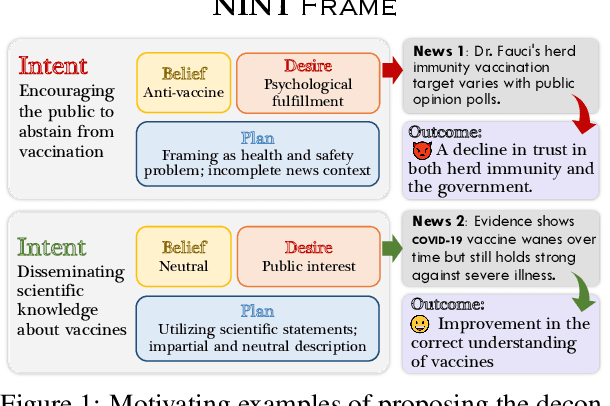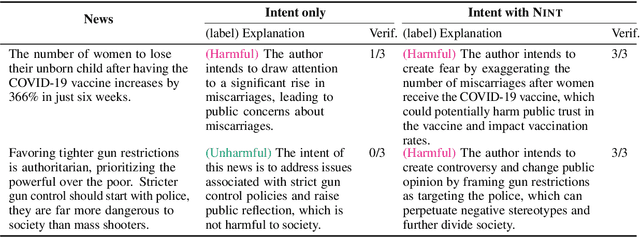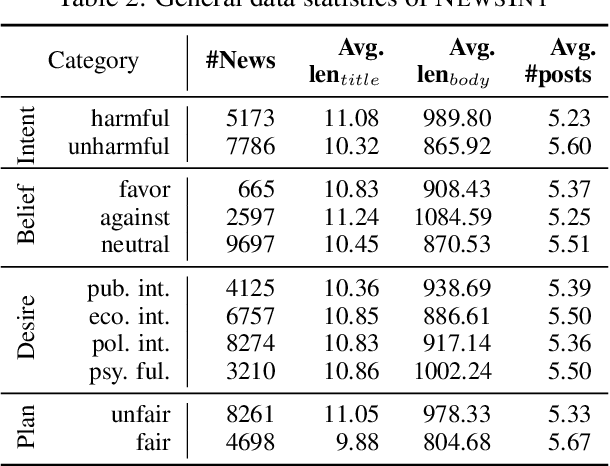Beizhe Hu
PhantomHunter: Detecting Unseen Privately-Tuned LLM-Generated Text via Family-Aware Learning
Jun 18, 2025Abstract:With the popularity of large language models (LLMs), undesirable societal problems like misinformation production and academic misconduct have been more severe, making LLM-generated text detection now of unprecedented importance. Although existing methods have made remarkable progress, a new challenge posed by text from privately tuned LLMs remains underexplored. Users could easily possess private LLMs by fine-tuning an open-source one with private corpora, resulting in a significant performance drop of existing detectors in practice. To address this issue, we propose PhantomHunter, an LLM-generated text detector specialized for detecting text from unseen, privately-tuned LLMs. Its family-aware learning framework captures family-level traits shared across the base models and their derivatives, instead of memorizing individual characteristics. Experiments on data from LLaMA, Gemma, and Mistral families show its superiority over 7 baselines and 3 industrial services, with F1 scores of over 96%.
LLM-Generated Fake News Induces Truth Decay in News Ecosystem: A Case Study on Neural News Recommendation
Apr 29, 2025Abstract:Online fake news moderation now faces a new challenge brought by the malicious use of large language models (LLMs) in fake news production. Though existing works have shown LLM-generated fake news is hard to detect from an individual aspect, it remains underexplored how its large-scale release will impact the news ecosystem. In this study, we develop a simulation pipeline and a dataset with ~56k generated news of diverse types to investigate the effects of LLM-generated fake news within neural news recommendation systems. Our findings expose a truth decay phenomenon, where real news is gradually losing its advantageous position in news ranking against fake news as LLM-generated news is involved in news recommendation. We further provide an explanation about why truth decay occurs from a familiarity perspective and show the positive correlation between perplexity and news ranking. Finally, we discuss the threats of LLM-generated fake news and provide possible countermeasures. We urge stakeholders to address this emerging challenge to preserve the integrity of news ecosystems.
Let Silence Speak: Enhancing Fake News Detection with Generated Comments from Large Language Models
May 26, 2024



Abstract:Fake news detection plays a crucial role in protecting social media users and maintaining a healthy news ecosystem. Among existing works, comment-based fake news detection methods are empirically shown as promising because comments could reflect users' opinions, stances, and emotions and deepen models' understanding of fake news. Unfortunately, due to exposure bias and users' different willingness to comment, it is not easy to obtain diverse comments in reality, especially for early detection scenarios. Without obtaining the comments from the ``silent'' users, the perceived opinions may be incomplete, subsequently affecting news veracity judgment. In this paper, we explore the possibility of finding an alternative source of comments to guarantee the availability of diverse comments, especially those from silent users. Specifically, we propose to adopt large language models (LLMs) as a user simulator and comment generator, and design GenFEND, a generated feedback-enhanced detection framework, which generates comments by prompting LLMs with diverse user profiles and aggregating generated comments from multiple subpopulation groups. Experiments demonstrate the effectiveness of GenFEND and further analysis shows that the generated comments cover more diverse users and could even be more effective than actual comments.
Ten Words Only Still Help: Improving Black-Box AI-Generated Text Detection via Proxy-Guided Efficient Re-Sampling
Feb 14, 2024Abstract:With the rapidly increasing application of large language models (LLMs), their abuse has caused many undesirable societal problems such as fake news, academic dishonesty, and information pollution. This makes AI-generated text (AIGT) detection of great importance. Among existing methods, white-box methods are generally superior to black-box methods in terms of performance and generalizability, but they require access to LLMs' internal states and are not applicable to black-box settings. In this paper, we propose to estimate word generation probabilities as pseudo white-box features via multiple re-sampling to help improve AIGT detection under the black-box setting. Specifically, we design POGER, a proxy-guided efficient re-sampling method, which selects a small subset of representative words (e.g., 10 words) for performing multiple re-sampling in black-box AIGT detection. Experiments on datasets containing texts from humans and seven LLMs show that POGER outperforms all baselines in macro F1 under black-box, partial white-box, and out-of-distribution settings and maintains lower re-sampling costs than its existing counterparts.
Understanding News Creation Intents: Frame, Dataset, and Method
Dec 27, 2023



Abstract:As the disruptive changes in the media economy and the proliferation of alternative news media outlets, news intent has progressively deviated from ethical standards that serve the public interest. News intent refers to the purpose or intention behind the creation of a news article. While the significance of research on news intent has been widely acknowledged, the absence of a systematic news intent understanding framework hinders further exploration of news intent and its downstream applications. To bridge this gap, we propose News INTent (NINT) frame, the first component-aware formalism for understanding the news creation intent based on research in philosophy, psychology, and cognitive science. Within this frame, we define the news intent identification task and provide a benchmark dataset with fine-grained labels along with an efficient benchmark method. Experiments demonstrate that NINT is beneficial in both the intent identification task and downstream tasks that demand a profound understanding of news. This work marks a foundational step towards a more systematic exploration of news creation intents.
Bad Actor, Good Advisor: Exploring the Role of Large Language Models in Fake News Detection
Sep 21, 2023Abstract:Detecting fake news requires both a delicate sense of diverse clues and a profound understanding of the real-world background, which remains challenging for detectors based on small language models (SLMs) due to their knowledge and capability limitations. Recent advances in large language models (LLMs) have shown remarkable performance in various tasks, but whether and how LLMs could help with fake news detection remains underexplored. In this paper, we investigate the potential of LLMs in fake news detection. First, we conduct an empirical study and find that a sophisticated LLM such as GPT 3.5 could generally expose fake news and provide desirable multi-perspective rationales but still underperforms the basic SLM, fine-tuned BERT. Our subsequent analysis attributes such a gap to the LLM's inability to select and integrate rationales properly to conclude. Based on these findings, we propose that current LLMs may not substitute fine-tuned SLMs in fake news detection but can be a good advisor for SLMs by providing multi-perspective instructive rationales. To instantiate this proposal, we design an adaptive rationale guidance network for fake news detection (ARG), in which SLMs selectively acquire insights on news analysis from the LLMs' rationales. We further derive a rationale-free version of ARG by distillation, namely ARG-D, which services cost-sensitive scenarios without inquiring LLMs. Experiments on two real-world datasets demonstrate that ARG and ARG-D outperform three types of baseline methods, including SLM-based, LLM-based, and combinations of small and large language models.
Learn over Past, Evolve for Future: Forecasting Temporal Trends for Fake News Detection
Jun 26, 2023Abstract:Fake news detection has been a critical task for maintaining the health of the online news ecosystem. However, very few existing works consider the temporal shift issue caused by the rapidly-evolving nature of news data in practice, resulting in significant performance degradation when training on past data and testing on future data. In this paper, we observe that the appearances of news events on the same topic may display discernible patterns over time, and posit that such patterns can assist in selecting training instances that could make the model adapt better to future data. Specifically, we design an effective framework FTT (Forecasting Temporal Trends), which could forecast the temporal distribution patterns of news data and then guide the detector to fast adapt to future distribution. Experiments on the real-world temporally split dataset demonstrate the superiority of our proposed framework. The code is available at https://github.com/ICTMCG/FTT-ACL23.
 Add to Chrome
Add to Chrome Add to Firefox
Add to Firefox Add to Edge
Add to Edge